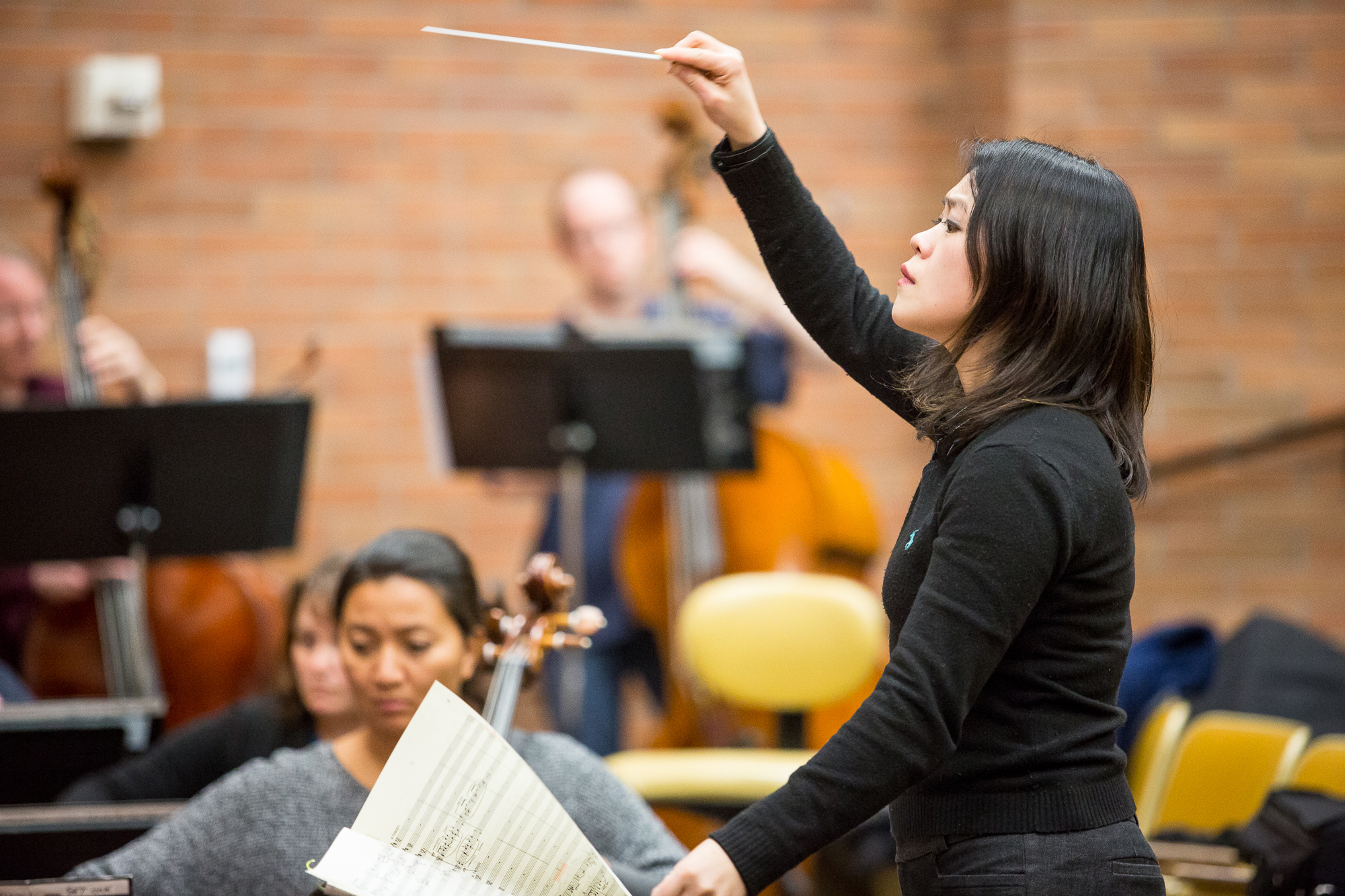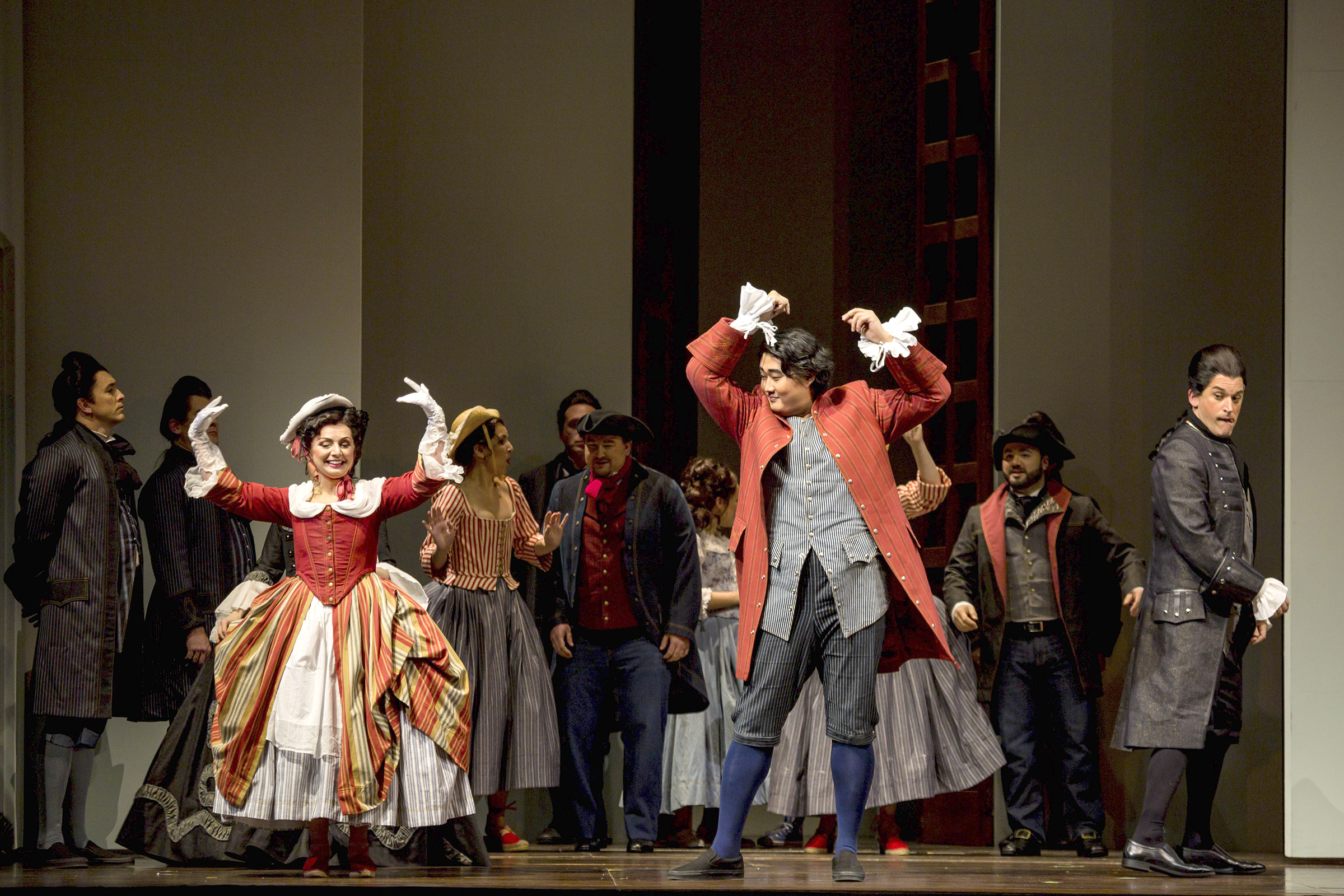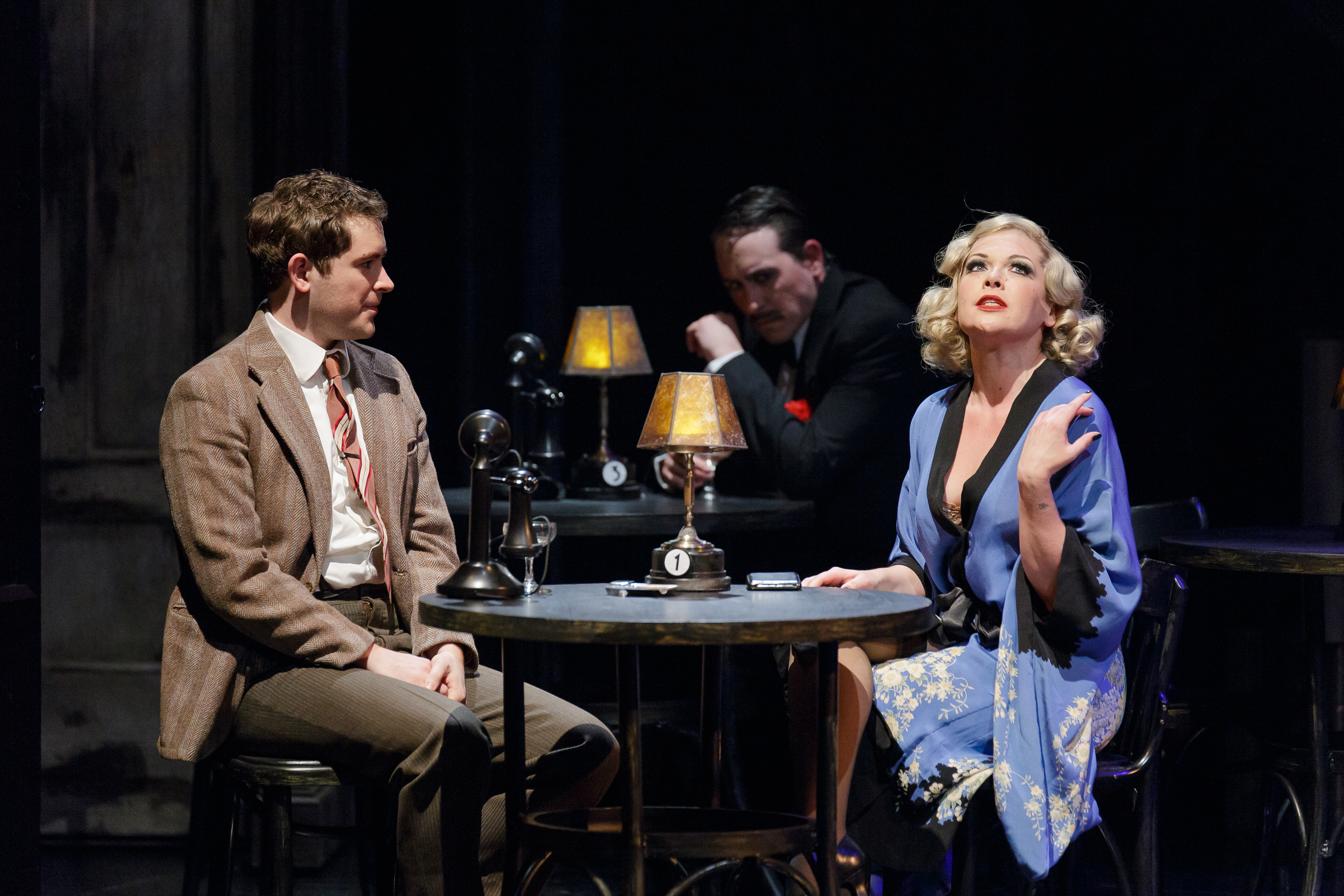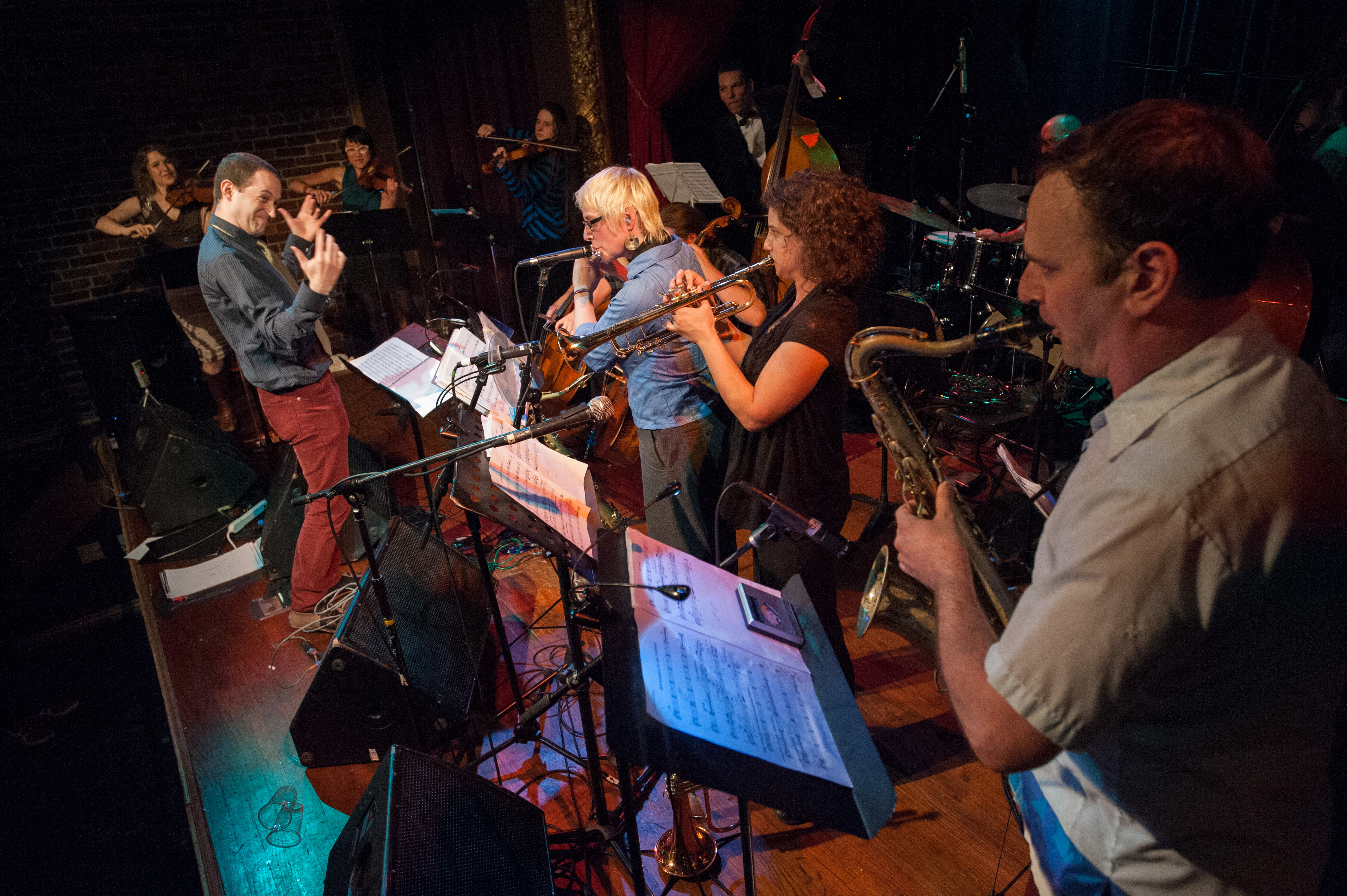Conductor Julia Tai offers a telling anecdote that indicates how much her business—and the classical-music world as a whole—has changed over the decades since it was, relatively, a growth industry: Reflecting on his long career, Jorge Mester, her former teacher, now 78, admitted to Tai, “I never applied for a single job in my life.”
It’s a little trickier these days to piece together a conducting career than it was when Mester was gifted a post straight out of Juilliard. So how has Tai, 33, managed to become the busiest conductor of her generation in the area? A musical background as wide as possible definitely helped. “I was immersed in music,” Tai says of her upbringing by music-loving parents in Taipei; “it became my first language.” She entered the conservatory there at age 9, studying violin with a minor in piano. With her mother a church music director, she was drawn to singing as well, and first went to USC, with its large and active opera program, to study voice. A side gig as a choral conductor awoke her ambition: She not only persuaded Mester to take her as a student for three years, but became his assistant at the Pasadena Symphony. That education was enhanced by time with the Los Angeles Master Chorale and opportunities to work under the L.A. Philharmonic’s Esa-Pekka Salonen.
Tai next came to the University of Washington for graduate work with Peter Eros, whom she reveres: “Very few [teachers] talk about music—how to use your imagination, how to pace it.” Plus, a smaller conducting program meant she’d get more time on the podium, and Eros assigned her to lead performances of operas by Weill and Mozart, where her experiences both as a vocalist and an instrumentalist came in handy. “I know what they have to think about—costumes, staging,” she says of opera singers—and remembers what it’s like below stage, too: “All the instruments in the pit don’t see the singers. They’re hanging onto you.”
But after academia, what next? Newly minted conductors today, rarely as lucky as Mester, have to make their own opportunities. “Classical music really has to look to the start-up model,” Tai asserts. “Most of the conductors I know started a group.” Knowing a strong network of UW composers and freelance players, Tai in 2010 teamed with fellow student Jeremy Jolley to launch the Seattle Modern Orchestra. They present three concerts a season of the most uncompromising new music: Lachenmann, Xenakis, and Gubaidulina, for example, on their February 20–21 concerts with guest cellist Severine Ballon.
The SMO has boosted her career not only in terms of experience and visibility; running your own ensemble forces you to learn all the things they don’t teach you at a conservatory. For instance, “Jeremy and I had to figure out all the copyright laws,” Tai says. And this “start-up” strengthened her application for a more traditional job: taking over Philharmonia Northwest after conductor Roupen Shakarian retired from the ensemble in 2011 after 26 years. What you do on the podium is only half a music director’s job, Tai points out: “Orchestras always ask about funding, audience development, grants.”
“I wouldn’t be happy doing just one,” Tai says of her complementary posts, performing avant-garde music with intrepid young musicians and standard repertory with an established community orchestra. Well, not entirely standard—Shakarian was a fan of music by local composers (this author, among others) and obscure 19th-century ones, and Tai has continued the tradition of stretching her players: After she was hired, she examined the past quarter-century of Philharmonia Northwest programs and built her first season entirely out of works they’d never played.
On the agenda for Tai’s rehearsal last week for Philharmonia Northwest’s February 16 concert is Edward Elgar’s Cello Concerto. Romantic concertos like this one are a major challenge for a conductor: Mercurial tempo fluctuations, written and unwritten, subtle or sudden, are part of the style; communicating them all to the players demands the utmost responsiveness and focus and a clearly readable baton technique; and on top of that is the necessity of coordinating everything with the whims of the soloist, who naturally has ideas of his or her own. Luckily, Sunday’s soloist is Seattle Symphony cellist Walter Gray, with whom Tai collaborates smoothly, deferring to him for suggestions on various matters concerning this piece he’s played for years.
“To develop rehearsal technique is to study psychology,” Tai says, and she leads the three dozen musicians efficiently, giving them what they need to play well but no more. She stops not for every tiny mishap, trusting the players to note and clean these up themselves on subsequent passes, which they do, but only to explain larger points—like how she’ll subdivide (indicate rhythms in increments smaller than a beat) in a certain bar. She dissects a complicated transition, pointing out who should cut off with whom; asks for longer phrases, for “more passion in the sound”; and concentrates on bringing the concerto the right sense of forward motion, urging sweep and lilt in passages that tend to bog down. Tai tidies up, but does not obsess over, details. As she puts it, “I’d rather have a more passionate performance than a perfect performance.”
She’s just as skilled at dealing with audiences, which she sees as a vital part of her mission. Again invoking Seattle’s tech innovations, she says “Everything is more interactive now”—and especially with the SMO’s arcane repertory, she and Jolley make a point of providing a bit of explication, lecture-recital style, of the works they play. With Philharmonia Northwest, too, she’s launched a series of pre-concert talks; Gray will offer his insights into the Elgar concerto at 2 p.m. this Sunday.
Tai’s also a believer in the movement to bring classical performances into non-traditional spaces. Though Philharmonia Northwest has been comfortable for several seasons at Laurelhurst’s St. Stephen’s Episcopal (consistency is also a way of making yourself accessible to audiences), the SMO plays all over the place; for its potentially forbidding programs, Tai seeks “less intimidating environments”—anywhere the atmosphere doesn’t throw up a barrier to what’s important: “The music is something we want to present to [listeners], she says. “The form doesn’t matter so much.”
gborchert@seattleweekly.com
PHILHARMONIA NORTHWEST St. Stephen’s Episcopal Church, 4805 N.E. 45th St., philharmonianw.org. $15–$20. 2:30 p.m. Sun., Feb. 16.
SEATTLE MODERN ORCHESTRA At PONCHO Concert Hall, Cornish College of the Arts, 710 E. Roy St., 8 p.m. Thurs., Feb. 20; and Chapel Performance Space, 4649 Sunnyside Ave. N., 8 p.m. Fri., Feb. 21. $10–$20. seattlemodernorchestra.org.







